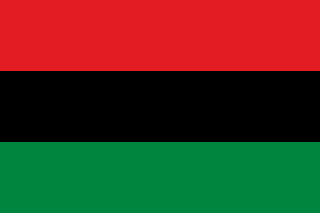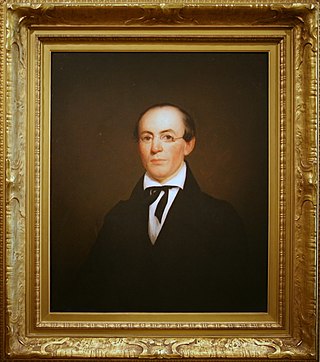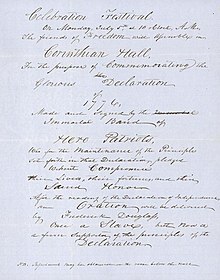
The Emancipation Proclamation, officially Proclamation 95, was a presidential proclamation and executive order issued by United States President Abraham Lincoln on January 1, 1863, during the American Civil War. The Proclamation changed the legal status of more than 3.5 million enslaved African Americans in the secessionist Confederate states from enslaved to free. As soon as slaves escaped the control of their enslavers, either by fleeing to Union lines or through the advance of federal troops, they were permanently free. In addition, the Proclamation allowed for former slaves to "be received into the armed service of the United States". The Emancipation Proclamation was part of the longer end of slavery in the United States.

Abolitionism, or the abolitionist movement, is the movement to end slavery and liberate enslaved people around the world.

Juneteenth is a federal holiday commemorating the end of slavery in the United States. Its name is a portmanteau of "June" and "nineteenth", as it is celebrated on the anniversary of June 19, 1865, when in the wake of the American Civil War, Major General Gordon Granger ordered the final enforcement of the Emancipation Proclamation in Texas. Originating in Galveston, Juneteenth has since been observed annually in various parts of the United States, often broadly celebrating African-American culture.

The Pan-African flag is a tri-color flag consisting of three equal horizontal bands of red, black, and green. The Universal Negro Improvement Association and African Communities League (UNIA-ACL) formally adopted it on August 13, 1920, in Article 39 of the Declaration of the Rights of the Negro Peoples of the World, during its month-long convention at Madison Square Garden in New York City. Variations of the flag can and have been used in various countries and territories in the Americas to represent Garveyist ideologies.

The New England Anti-Slavery Society (1831–1837) was formed by William Lloyd Garrison, editor of The Liberator, in 1831. The Liberator was its official publication.

There are 11 official public holidays in France. The Alsace region and the Moselle department observe 2 additional days. These holidays do not shift when they fall during a week-end, which means that the average number of observed public holidays falling on weekdays is 8.7 and ranges from 7 to 10. Most Asian countries and all North American countries observe between 2 and 10 more public holidays per year on weekdays.

Emancipation Day is observed in many former European colonies in the Caribbean and areas of the United States on various dates to commemorate the emancipation of slaves of African descent.

The Slavery Abolition Act 1833 was an Act of the Parliament of the United Kingdom which provided for the gradual abolition of slavery in most parts of the British Empire. It was passed by Earl Grey's reforming administration and expanded the jurisdiction of the Slave Trade Act 1807 and made the purchase or ownership of slaves illegal within the British Empire, with the exception of "the Territories in the Possession of the East India Company", Ceylon, and Saint Helena. The Act was repealed in 1998 as a part of wider rationalisation of English statute law; however, later anti-slavery legislation remains in force.
Beginning July 7, 1834, New York City was torn by a huge antiabolitionist riot that lasted for nearly a week until it was put down by military force. "At times the rioters controlled whole sections of the city while they attacked the homes, businesses, and churches of abolitionist leaders and ransacked black neighborhoods."

The George Washington Carver Museum and Cultural Center is a museum and cultural center in east Austin, Texas, housed in the former George Washington Carver branch of the Austin Public Library. Named in honor of George Washington Carver, the facility has been listed on the National Register of Historic Places since 2005.
The New-York Manumission Society was an American organization founded in 1785 by U.S. Founding Father John Jay, among others, to promote the gradual abolition of slavery and manumission of slaves of African descent within the state of New York. The organization was made up entirely of white men, most of whom were wealthy and held influential positions in society. Throughout its history, which ended in 1849 after the abolition of slavery in New York, the society battled against the slave trade, and for the eventual emancipation of all the slaves in the state. It founded the African Free School for the poor and orphaned children of slaves and free people of color.

The abolition of slavery occurred at different times in different countries. It frequently occurred sequentially in more than one stage – for example, as abolition of the trade in slaves in a specific country, and then as abolition of slavery throughout empires. Each step was usually the result of a separate law or action. This timeline shows abolition laws or actions listed chronologically. It also covers the abolition of serfdom.

The importation of enslaved Africans to what became New York began as part of the Dutch slave trade. The Dutch West India Company imported eleven African slaves to New Amsterdam in 1626, with the first slave auction held in New Amsterdam in 1655. With the second-highest proportion of any city in the colonies, more than 42% of New York City households held slaves by 1703, often as domestic servants and laborers. Others worked as artisans or in shipping and various trades in the city. Slaves were also used in farming on Long Island and in the Hudson Valley, as well as the Mohawk Valley region.
The Colored National Convention of 1855 was a colored convention event held on October 16, 17, and 18 at Franklin Hall in Philadelphia, Pennsylvania. It consisted of delegates from Massachusetts, Rhode Island, Connecticut, New York, Pennsylvania, New Jersey, and Canada.

In the United States, abolitionism, the movement that sought to end slavery in the country, was active from the late colonial era until the American Civil War, the end of which brought about the abolition of American slavery through the Thirteenth Amendment to the United States Constitution.
Negro Election Day is a festival that began during 1741 in several towns of New England as part of the local election of the black representative of that community. The festival incorporated aspects of West African culture and ritualistic celebrations such as traditional dancing, African feasting, and parades.
Nathaniel Paul was a Baptist minister and abolitionist who worked in Albany, New York, Wilberforce Colony in Canada, and traveled to the United Kingdom to raise support to aid African Americans.

From the late-18th to the mid-19th century, various states of the United States of America allowed the enslavement of human beings, most of whom had been transported from Africa during the Atlantic slave trade or were their descendants. The institution of slavery was established in North America in the 16th century under Spanish colonization, British colonization, French colonization, and Dutch colonization.

Following the creation of the United States in 1776 and the ratification of the U.S. Constitution in 1789, the legal status of slavery was generally a matter for individual U.S. state legislatures and judiciaries As such, slavery flourished in some states, and withered on the vine in others. On the whole, the former Thirteen Colonies abolished slavery relatively slowly, with Northern states often using gradual emancipation systems in which freedom would be granted after so many years of life or service.















